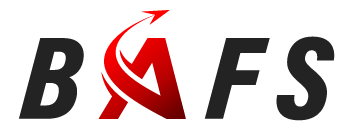Type Rating Course C-525 (s)
Requrements for the – Type Rating Course Cessna 525 – C-525 PIC-IR Sp-ops and / or MP-ops
Required on e.g. Cessna 525 (series), CJ, CJ 1, CJ2, CJ3, CJ1+, CJ2+, CJ3+, CJ4, CJ M2(1+)

Approved Course as per EU- reg. 1178/2011; part FCL.720.A; Class- and Type Rating List of EASA
An applicant for a type-rating shall complete a training course at an ATO. The type rating training course shall include the mandatory training elements for the relevant type as defined in the operational suitability data established in accordance with Part-21 acc. FCL.725 (a), OSD report always in the latest version (p.t. 2015).
Prior enrollment of a Student, the requirements for the acquisition of a type-rating will be verified acc. FCL.720.A. Before starting and enrolling an applicant for a first type rating for a single-pilot aeroplane classified as a high performance aeroplane shall acc. FCL.720.A (b):
(1) have at least 200 hours of total flying experience, of which 70 hours as PIC on aeroplanes; and
(2) (i) hold a certificate of satisfactory completion of a course for additional theoretical knowledge
undertaken at an ATO (HPA endorsement training) acc part FCL.720(b); or
(ii) have passed the ATPL(A) theoretical knowledge examinations in accordance with this part FCL; or
(iii) hold, in addition to a license issued in accordance with this part FCL, an ATPL(A) or CPL(A)/IR with theoretical knowledge credit for ATPL(A), issued in accordance with Annex 1 to the Chicago Convention.
Acc. FCL.720.A(c) applicants for the issue of a first type rating for a complex single- pilot aeroplane classified as a high performance aeroplane shall, in addition to meeting the requirements of FCL.720.A (b), have fulfilled the requirements for a multi-engine IR(A), as established in Subpart G of EASA part FCL.600 ff.
An applicant for the issue of additional multi-pilot type ratings and single-pilot high performance complex aeroplanes type ratings shall hold a multi-engine IR(A) acc. FCL.720.A (f).
An applicant, who does not meet the prerequisites acc. AMC1 FCL.720.A(b)(2)(i)(a) (HPA endorsement training), has to attend an HPA course (offered by this ATO as add on prior to obtain a TR course) acc. AMC1 FCL.720.A(b)(2)(i)/(b)/(c)/(d)/(e)/(f) (HPA endorsement training).
In addition, pilots seeking the privilege to operate the aeroplane in multi-pilot operations and the TR course is not combined with an MCC course, shall meet the following requirements:
1. hold a certificate of satisfactory completion of an MCC course in aeroplanes; or
2. have at least 500 hours as a pilot in multi-pilot operations on single-pilot multi-engine aeroplanes, in commercial air transport in accordance with the applicable air operations requirements.
Credits for previous experience has to be obtained from the competent authority, which will be the National CAA issuing the respective license, before training begins. [AMC1 ORA.ATO.230 (a)].
and
(5) have completed the training course specified in FCL.745.A. UPRT Advanced Course
(d) When so determined in the OSD, the exercise of the privileges of a type rating may be initially limited to flight under the supervision of an instructor.
The flight hours under supervision shall be entered in the pilots‘ logbook or equivalent record and signed by the instructor. The limitation shall be removed when pilots demonstrate that the hours (25 h up to 50 h on Cessna 525 series) of flight under supervision required in the OSD have been completed
BAFS ATO is offering the following training courses, as per OEM / OSD and FSB Report:
- SP – OPS as PIC, 40 h GS, 4 h Mock-up, 16 h FFS, plus 2h LST
- MP–OPSasPIC,40hGS,4hMock-up,18hFFS(2hunderMP-ops), plus 2h LST
Base training / landing training on the aircraft will be done at the end of the training (after successful pass of LST), consisting of 4 – 6 Take Off and Landings, if requested by the customer / client on our BAFS- ATO associated Airplane fleet.
Additionally the BAFS ATO is offering the 25 hour / 50 hour practical training (LIFUS) on the aircraft, with our well qualified and experienced TRI/TRE, preferably on the variant to be operational flown and, if required, on all different variants, as per part FCL.710 and EASA OSD / ODR diff. list in their latest version published by EASA.

